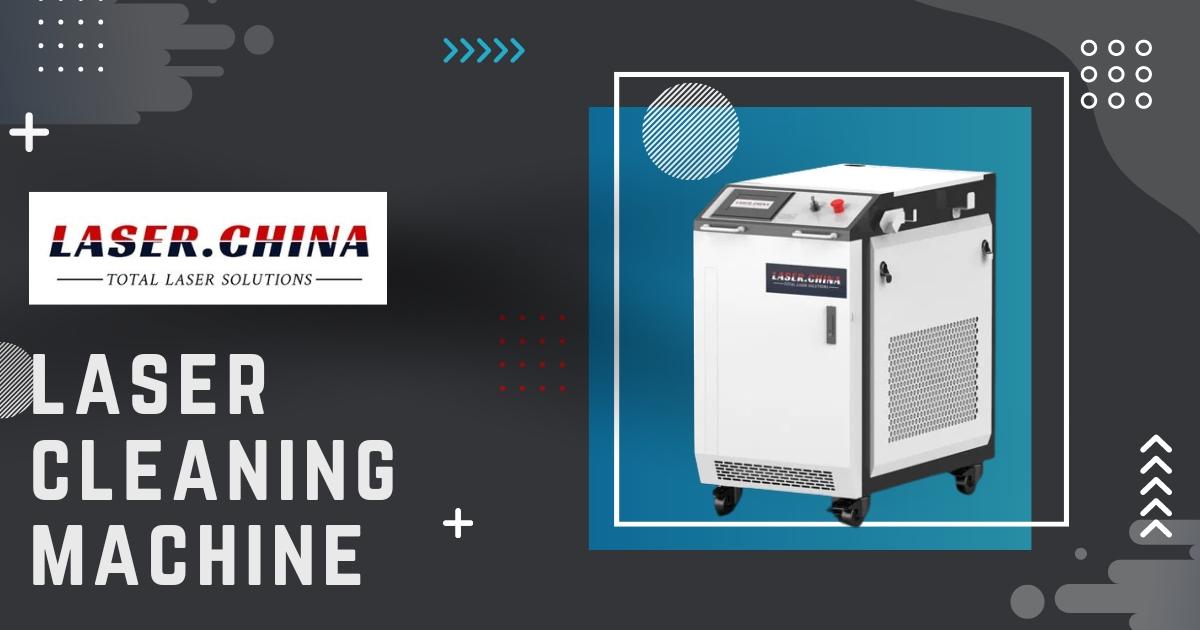Laser cleaning machines are transforming the landscape of industrial surface preparation and restoration. Whether you’re in manufacturing, automotive, aerospace, or restoration industries, understanding the full potential of laser cleaners can give your business a clear edge. This guide provides in-depth insight into how laser cleaning machine work, their benefits, applications, and what makes them a smart, eco-friendly alternative to traditional methods.
What Is a Laser Cleaning Machine?
A laser cleaning machine is an advanced device that uses high-powered laser beams to remove rust, paint, grease, oxides, and other contaminants from surfaces. Instead of abrasive blasting or using chemicals, the laser targets unwanted material with precision, vaporizing it without damaging the base layer.
How Does Laser Cleaning Work?
Laser cleaning works on the principle of laser ablation. The energy from the laser beam hits the surface and breaks the bond between the contaminant and the material underneath.
Step-by-step process:
-
Laser Emission – A laser beam is emitted from the source.
-
Absorption – The surface contaminant absorbs the laser energy.
-
Thermal Expansion – Rapid heating causes the contaminant to expand and detach.
-
Evaporation – The debris is vaporized or removed using a vacuum or air assist.
Benefits of Using Laser Cleaning Machines
Eco-Friendly:
-
No harsh chemicals or waste materials
-
No need for solvents or abrasive media
Non-Destructive:
-
Safe for delicate surfaces like historic monuments, aerospace parts, and electronics
Cost-Efficient:
-
Minimal maintenance
-
Reduced need for protective gear
-
Long-term ROI
Highly Precise:
-
Adjustable power and frequency for material-specific cleaning
-
Removes microns without surface abrasion
Industrial Applications
| Industry | Applications |
|---|---|
| Automotive | Rust removal, engine degreasing, paint stripping |
| Aerospace | Composite surface cleaning, coating removal |
| Manufacturing | Weld preparation, mold cleaning |
| Art & Heritage | Restoration of sculptures, monuments |
| Electronics | Circuit board degreasing |
Types of Laser Cleaners
| Type | Best For | Power Range |
|---|---|---|
| Handheld Laser Cleaner | On-site cleaning, small components | 50W – 1000W |
| Pulsed Laser System | Sensitive surfaces, precision jobs | Up to 500W |
| Continuous Wave (CW) | Industrial-scale cleaning | 1000W and above |
Why Industries Are Switching to Laser Cleaning Technology
-
Regulatory Compliance: Meets OSHA and EPA standards without secondary waste
-
Worker Safety: No risk of toxic fumes or abrasive contact injuries
-
Time-Saving: No drying time, immediate inspection after cleaning
-
Automation Ready: Easily integrated into robotic arms and automated production lines
Comparison Table: Laser Cleaning vs Traditional Cleaning
| Feature | Laser Cleaning | Sandblasting | Chemical Cleaning |
|---|---|---|---|
| Environmental Impact | Low | High | High |
| Surface Damage Risk | Low | Moderate to High | High |
| Consumables Required | None | Abrasive Media | Solvents |
| Operational Cost | Low (long-term) | Medium | High |
| Cleanup Time | Minimal | Extensive | Moderate |
FAQs About Laser Cleaning Machines
Q1: Can laser cleaning damage my material?
Laser cleaning is highly controllable and typically does not damage the base material. However, proper settings and trained operators are essential for sensitive surfaces.
Q2: Is laser cleaning suitable for large-scale industrial use?
Yes, many models are designed for continuous operation and can be automated for large production lines.
Q3: What maintenance does a laser cleaner require?
Minimal maintenance is required. Typically involves occasional lens cleaning and software updates.
Q4: Can I use it for painted surfaces?
Yes, laser cleaners effectively remove layers of paint without harming metal or composite materials underneath.
Q5: Is laser cleaning safe for operators?
When used with proper safety equipment like goggles and enclosures, laser cleaning is extremely safe.
Expert Insight: What to Consider Before Buying a Laser Cleaning Machine
-
Power Level: Higher wattage for heavy-duty industrial use, lower for precision tasks
-
Cooling System: Air-cooled for portability, water-cooled for high power output
-
Mobility: Handheld vs. mounted units depending on application needs
-
Material Compatibility: Not all materials reflect laser beams equally—know your substrate
-
Warranty & Support: Always look for a provider that offers robust training and tech support
Final Thought:
laser cleaning machine are not just an upgrade—they are a leap forward in how industries tackle surface preparation. From restoring delicate heritage artifacts to stripping heavy rust from industrial tools, laser cleaning offers precision, efficiency, and sustainability unmatched by traditional methods.

